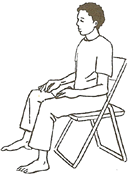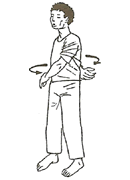Sophrology aims to help people live more consciously with their body and mind in harmony.
Sophrology is simple and easy to learn. The method is based on a combination of Oriental techniques (Yoga, Zen and Buddhist meditation), and Western psychology, phenomenology and hypnosis. Based on breathing, relaxation and concentration exercises, it includes simple movements as well.
Guided by the sophrologist, sitting or standing, you learn how to relax your entire body, to identify and release tensions and then to activate your energy. From that state of consciousness, specific techniques are chosen to address your specific needs.
Sophrology can be practised in One to One sessions (45 to 60 mins) or Group classes (1 hour). Four to five sessions/classes are needed to master the basic techniques. Clients are asked to practise the techniques every day for 10 to 20 minutes. The more practice, the more efficient the techniques become. The ultimate aim is to develop the skills so that people can use the techniques on their own whenever needed in their daily life.
What Sophrology may help with?
Stress related symptoms (sleep disorder, back pain, digestive problems…)
- Learn how to relax, to identify and release tensions, to develop a better awareness of the factors that create stress in you and of your reactions to them at an early stage to enable you to manage them better.
Anxiety, phobia, panic attacks
- Learn how to manage crisis, gradually controlling your reactions when facing the source of fear.
Addiction
- Specific techniques to help you quit smoking or any other addiction.
Preparation for a forthcoming event
- Become more confident and positive for exams, interviews, childbirth, surgery.
Self-development
- Be more aware of inner resources, strengths and personal values and learn how to develop them.
Children
- Sophrology can also be very effective with children helping them to manage anxiety, lack of concentration, improving confidence and motivation.
Dynamic Relaxation exercises
(1) (2)
(2) (3)
(3) 
Drawings from Dr P-A Chéné
(1) Active sitting posture
(2) Pumping movement standing posture
(3) Rotations standing posture
